将Nginx源码数组结构(ngx_array.c)和内存池代码单独编译运行,附代码
在上面一篇的基础上把Nginx源码数组结构也摘录下来,也增加了测试代码,编译运行。
https://blog.csdn.net/katerdaisy/article/details/132358883
《将nginx内存池代码单独编译运行,了解nginx内存池工作原理,附代码》
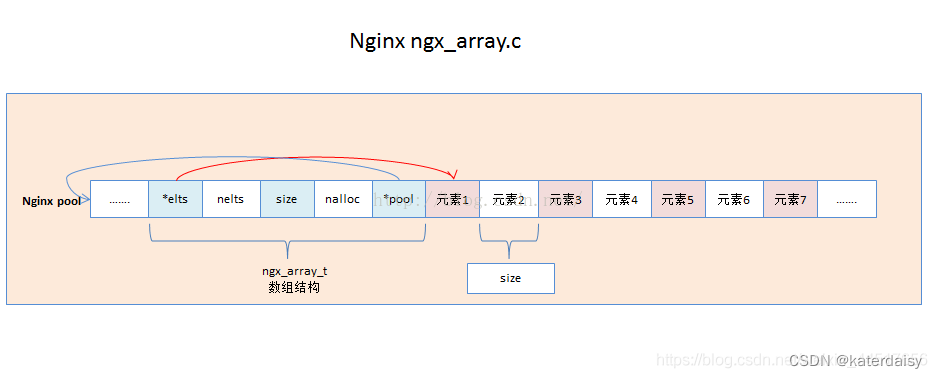
核心代码:
//在内存数组中分三次写入 "hello", "world", "!",然后使用指针加偏移,地址加数据长度两种方式将保存在数组中的文字打印出来
// char mychar[6] = "hello";
// ngx_str_t mydata = {sizeof(mychar),mychar};
ngx_array_t *a = NULL;
a = ngx_array_create(pool, 1, sizeof(ngx_str_t));ngx_str_t *s = ngx_array_push(a);
s->data = "hello";
s->len = sizeof(s->data);
printf("a->nelts: %ld, a->nalloc:%ld\n",a->nelts,a->nalloc);
printf("ngx_array_push:%s\n",((ngx_str_t *)(a->elts))->data);
printf("ngx_array_push:%s\n",s->data);ngx_str_t *s1 = ngx_array_push(a);
s1->data = "wrold";
s1->len = sizeof(s1->data);
printf("a->nelts: %ld, a->nalloc:%ld\n",a->nelts,a->nalloc);
printf("ngx_array_push:%s\n",((ngx_str_t *)(a->elts+sizeof(ngx_str_t)))->data);//地址加数据长度
printf("ngx_array_push:%s\n",((ngx_str_t *)(a->elts)+1)->data); //使用指针加偏移
printf("ngx_array_push:%s\n",s1->data);ngx_str_t *s2 = ngx_array_push(a);
s2->data = "!";
s2->len = sizeof(s2->data);
printf("a->nelts: %ld, a->nalloc:%ld\n",a->nelts,a->nalloc);
printf("ngx_array_push:%s\n",((ngx_str_t *)(a->elts+sizeof(ngx_str_t)*(a->nelts-1)))->data);//地址加数据长度
printf("ngx_array_push:%s\n",((ngx_str_t *)(a->elts)+a->nelts-1)->data); //使用指针加偏移
printf("ngx_array_push:%s\n",s2->data);
结果:
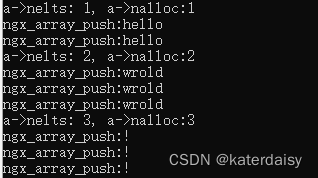
完整代码:
//-------------------------------------------------------------------------------------------
//下面是一些头文件和宏定义,从nginx的源码中摘录过来
#include </usr/include/stdint.h>
#include <sys/types.h>
#include <sys/time.h>
#include <unistd.h>
#include <stdarg.h>
#include <stddef.h> /* offsetof() /
#include <stdio.h>
#include <stdlib.h>
#include <ctype.h>
#include <errno.h>
#include <string.h>
#include <signal.h>
#include <pwd.h>
#include <grp.h>
#include <dirent.h>
#include <glob.h>
#include <sys/vfs.h> / statfs() */
#include <sys/uio.h>
#include <sys/stat.h>
#include <fcntl.h>
#include <sys/wait.h>
#include <sys/mman.h>
#include <sys/resource.h>
#include <sched.h>
#include <sys/socket.h>
#include <netinet/in.h>
#include <netinet/tcp.h> /* TCP_NODELAY, TCP_CORK */
#include <arpa/inet.h>
#include <netdb.h>
#include <sys/un.h>
#include <time.h> /* tzset() /
#include <malloc.h> / memalign() /
#include <limits.h> / IOV_MAX /
#include <sys/ioctl.h>
#include <crypt.h>
#include <sys/utsname.h> / uname() */
#include <dlfcn.h>
#ifndef ngx_inline
#define ngx_inline inline
#endif
typedef int ngx_fd_t;
typedef intptr_t ngx_int_t;
typedef uintptr_t ngx_uint_t;
typedef intptr_t ngx_flag_t;
typedef struct ngx_module_s ngx_module_t;
typedef struct ngx_conf_s ngx_conf_t;
typedef struct ngx_cycle_s ngx_cycle_t;
typedef struct ngx_pool_s ngx_pool_t;
typedef struct ngx_chain_s ngx_chain_t;
typedef struct ngx_log_s ngx_log_t;
typedef struct ngx_open_file_s ngx_open_file_t;
typedef struct ngx_command_s ngx_command_t;
typedef struct ngx_file_s ngx_file_t;
typedef struct ngx_event_s ngx_event_t;
typedef struct ngx_event_aio_s ngx_event_aio_t;
typedef struct ngx_connection_s ngx_connection_t;
ngx_uint_t ngx_pagesize;
ngx_uint_t ngx_pagesize_shift;
ngx_uint_t ngx_cacheline_size;
// #define NGX_LOG_STDERR 0
// #define NGX_LOG_EMERG 1
// #define NGX_LOG_ALERT 2
// #define NGX_LOG_CRIT 3
// #define NGX_LOG_ERR 4
// #define NGX_LOG_WARN 5
// #define NGX_LOG_NOTICE 6
// #define NGX_LOG_INFO 7
// #define NGX_LOG_DEBUG 8
// #define NGX_LOG_DEBUG_CORE 0x010
// #define NGX_LOG_DEBUG_ALLOC 0x020
// #define NGX_LOG_DEBUG_MUTEX 0x040
// #define NGX_LOG_DEBUG_EVENT 0x080
// #define NGX_LOG_DEBUG_HTTP 0x100
// #define NGX_LOG_DEBUG_MAIL 0x200
// #define NGX_LOG_DEBUG_STREAM 0x400
/*
- do not forget to update debug_levels[] in src/core/ngx_log.c
- after the adding a new debug level
*/
#define NGX_LOG_DEBUG_FIRST NGX_LOG_DEBUG_CORE
#define NGX_LOG_DEBUG_LAST NGX_LOG_DEBUG_STREAM
#define NGX_LOG_DEBUG_CONNECTION 0x80000000
#define NGX_LOG_DEBUG_ALL 0x7ffffff0
#ifndef NGX_PALLOC_H_INCLUDED
#define NGX_PALLOC_H_INCLUDED
#ifndef NGX_ALIGNMENT
#define NGX_ALIGNMENT sizeof(unsigned long) /* platform word */
#endif
#define NGX_OK 0
#define NGX_ERROR -1
#define NGX_AGAIN -2
#define NGX_BUSY -3
#define NGX_DONE -4
#define NGX_DECLINED -5
#define NGX_ABORT -6
#define NGX_INVALID_FILE -1
#define NGX_FILE_ERROR -1
#define ngx_errno errno
#define ngx_close_file close
#define ngx_close_file_n “close()”
typedef int ngx_err_t;
#define NGX_ENOENT ENOENT
#define ngx_delete_file_n “unlink()”
/*
- NGX_MAX_ALLOC_FROM_POOL should be (ngx_pagesize - 1), i.e. 4095 on x86.
- On Windows NT it decreases a number of locked pages in a kernel.
*/
#define NGX_MAX_ALLOC_FROM_POOL (ngx_pagesize - 1)
#define NGX_DEFAULT_POOL_SIZE (16 * 1024)
#define NGX_POOL_ALIGNMENT 16
#define NGX_MIN_POOL_SIZE
ngx_align((sizeof(ngx_pool_t) + 2 * sizeof(ngx_pool_large_t)),
NGX_POOL_ALIGNMENT)
typedef void (*ngx_pool_cleanup_pt)(void *data);
typedef struct ngx_pool_cleanup_s ngx_pool_cleanup_t;
struct ngx_pool_cleanup_s {
ngx_pool_cleanup_pt handler;
void *data;
ngx_pool_cleanup_t *next;
};
typedef struct ngx_pool_large_s ngx_pool_large_t;
struct ngx_pool_large_s {
ngx_pool_large_t *next;
void *alloc;
};
typedef struct {
u_char *last;
u_char *end;
ngx_pool_t *next;
ngx_uint_t failed;
} ngx_pool_data_t;
struct ngx_pool_s {
ngx_pool_data_t d;
size_t max;
ngx_pool_t *current;
ngx_chain_t *chain;
ngx_pool_large_t *large;
ngx_pool_cleanup_t *cleanup;
ngx_log_t *log;
};
typedef struct {
ngx_fd_t fd;
u_char *name;
ngx_log_t *log;
} ngx_pool_cleanup_file_t;
void *ngx_alloc(size_t size, ngx_log_t *log);
void *ngx_calloc(size_t size, ngx_log_t *log);
ngx_pool_t *ngx_create_pool(size_t size, ngx_log_t *log);
void ngx_destroy_pool(ngx_pool_t *pool);
void ngx_reset_pool(ngx_pool_t *pool);
void *ngx_palloc(ngx_pool_t *pool, size_t size);
void *ngx_pnalloc(ngx_pool_t *pool, size_t size);
void *ngx_pcalloc(ngx_pool_t *pool, size_t size);
void *ngx_pmemalign(ngx_pool_t *pool, size_t size, size_t alignment);
ngx_int_t ngx_pfree(ngx_pool_t *pool, void *p);
ngx_pool_cleanup_t *ngx_pool_cleanup_add(ngx_pool_t *p, size_t size);
void ngx_pool_run_cleanup_file(ngx_pool_t *p, ngx_fd_t fd);
void ngx_pool_cleanup_file(void *data);
void ngx_pool_delete_file(void *data);
#endif /* NGX_PALLOC_H_INCLUDED */
ngx_uint_t ngx_pagesize;
ngx_uint_t ngx_pagesize_shift;
ngx_uint_t ngx_cacheline_size;
#define ngx_free free
#define ngx_memzero(buf, n) (void) memset(buf, 0, n)
#define ngx_memset(buf, c, n) (void) memset(buf, c, n)
#define ngx_align_ptr(p, a)
(u_char *) (((uintptr_t) § + ((uintptr_t) a - 1)) & ~((uintptr_t) a - 1))
#define ngx_delete_file(name) unlink((const char *) name)
#define ngx_delete_file_n “unlink()”
void *
ngx_alloc(size_t size, ngx_log_t *log)
{
void *p;
p = malloc(size);
if (p == NULL) {printf("malloc(%lu) failed\n", size);
}printf("malloc: %p:%lu\n", p, size);return p;
}
void *
ngx_calloc(size_t size, ngx_log_t *log)
{
void *p;
p = ngx_alloc(size, log);if (p) {ngx_memzero(p, size);
}return p;
}
//#define NGX_HAVE_POSIX_MEMALIGN 1
#define NGX_HAVE_MEMALIGN 1
#if (NGX_HAVE_POSIX_MEMALIGN)
void *
ngx_memalign(size_t alignment, size_t size, ngx_log_t *log)
{
void *p;
int err;
err = posix_memalign(&p, alignment, size);if (err) {printf("posix_memalign(%lu, %lu) failed\n", alignment, size);p = NULL;
}printf("posix_memalign: %p:%lu @%lu\n", p, size, alignment);return p;
}
#elif (NGX_HAVE_MEMALIGN)
void *
ngx_memalign(size_t alignment, size_t size, ngx_log_t *log)
{
void *p;
p = memalign(alignment, size);
if (p == NULL) {printf("memalign(%lu, %lu) failed\n", alignment, size);
}printf("memalign: %p:%lu @%lu\n", p, size, alignment);return p;
}
#endif
//-------------------------------------------------------------------------------------------
//下面是从ngx_pcallo.c复制过来的内存池核心代码
static ngx_inline void *ngx_palloc_small(ngx_pool_t *pool, size_t size,
ngx_uint_t align);
static void *ngx_palloc_block(ngx_pool_t *pool, size_t size);
static void *ngx_palloc_large(ngx_pool_t *pool, size_t size);
ngx_pool_t *
ngx_create_pool(size_t size, ngx_log_t *log)
{
ngx_pool_t *p;
p = ngx_memalign(NGX_POOL_ALIGNMENT, size, log);
if (p == NULL) {return NULL;
}p->d.last = (u_char *) p + sizeof(ngx_pool_t);
p->d.end = (u_char *) p + size;
p->d.next = NULL;
p->d.failed = 0;size = size - sizeof(ngx_pool_t);
p->max = (size < NGX_MAX_ALLOC_FROM_POOL) ? size : NGX_MAX_ALLOC_FROM_POOL;p->current = p;
p->chain = NULL;
p->large = NULL;
p->cleanup = NULL;
p->log = log;return p;
}
void
ngx_destroy_pool(ngx_pool_t *pool)
{
ngx_pool_t *p, *n;
ngx_pool_large_t *l;
ngx_pool_cleanup_t *c;
for (c = pool->cleanup; c; c = c->next) {if (c->handler) {printf("run cleanup: %p\n", c);c->handler(c->data);}
}
#if (NGX_DEBUG)
/** we could allocate the pool->log from this pool* so we cannot use this log while free()ing the pool*/for (l = pool->large; l; l = l->next) {printf("free: %p\n", l->alloc);
}for (p = pool, n = pool->d.next; /* void */; p = n, n = n->d.next) {printf("free: %p, unused: %lu\n", p, p->d.end - p->d.last);if (n == NULL) {break;}
}
#endif
for (l = pool->large; l; l = l->next) {if (l->alloc) {ngx_free(l->alloc);}
}for (p = pool, n = pool->d.next; /* void */; p = n, n = n->d.next) {ngx_free(p);if (n == NULL) {break;}
}
}
void
ngx_reset_pool(ngx_pool_t *pool)
{
ngx_pool_t *p;
ngx_pool_large_t *l;
for (l = pool->large; l; l = l->next) {if (l->alloc) {ngx_free(l->alloc);}
}for (p = pool; p; p = p->d.next) {p->d.last = (u_char *) p + sizeof(ngx_pool_t);p->d.failed = 0;
}pool->current = pool;
pool->chain = NULL;
pool->large = NULL;
}
void *
ngx_palloc(ngx_pool_t *pool, size_t size)
{
#if !(NGX_DEBUG_PALLOC)
if (size <= pool->max) {
return ngx_palloc_small(pool, size, 1);
}
#endif
return ngx_palloc_large(pool, size);
}
void *
ngx_pnalloc(ngx_pool_t *pool, size_t size)
{
#if !(NGX_DEBUG_PALLOC)
if (size <= pool->max) {
return ngx_palloc_small(pool, size, 0);
}
#endif
return ngx_palloc_large(pool, size);
}
static ngx_inline void *
ngx_palloc_small(ngx_pool_t *pool, size_t size, ngx_uint_t align)
{
u_char *m;
ngx_pool_t *p;
p = pool->current;do {m = p->d.last;if (align) {m = ngx_align_ptr(m, NGX_ALIGNMENT);}if ((size_t) (p->d.end - m) >= size) {p->d.last = m + size;return m;}p = p->d.next;} while (p);return ngx_palloc_block(pool, size);
}
static void *
ngx_palloc_block(ngx_pool_t *pool, size_t size)
{
u_char *m;
size_t psize;
ngx_pool_t *p, *new;
psize = (size_t) (pool->d.end - (u_char *) pool);m = ngx_memalign(NGX_POOL_ALIGNMENT, psize, pool->log);
if (m == NULL) {return NULL;
}new = (ngx_pool_t *) m;new->d.end = m + psize;
new->d.next = NULL;
new->d.failed = 0;m += sizeof(ngx_pool_data_t);
m = ngx_align_ptr(m, NGX_ALIGNMENT);
new->d.last = m + size;for (p = pool->current; p->d.next; p = p->d.next) {if (p->d.failed++ > 4) {pool->current = p->d.next;}
}p->d.next = new;return m;
}
static void *
ngx_palloc_large(ngx_pool_t *pool, size_t size)
{
void *p;
ngx_uint_t n;
ngx_pool_large_t *large;
p = ngx_alloc(size, pool->log);
if (p == NULL) {return NULL;
}n = 0;for (large = pool->large; large; large = large->next) {if (large->alloc == NULL) {large->alloc = p;return p;}if (n++ > 3) {break;}
}large = ngx_palloc_small(pool, sizeof(ngx_pool_large_t), 1);
if (large == NULL) {ngx_free(p);return NULL;
}large->alloc = p;
large->next = pool->large;
pool->large = large;return p;
}
void *
ngx_pmemalign(ngx_pool_t *pool, size_t size, size_t alignment)
{
void *p;
ngx_pool_large_t *large;
p = ngx_memalign(alignment, size, pool->log);
if (p == NULL) {return NULL;
}large = ngx_palloc_small(pool, sizeof(ngx_pool_large_t), 1);
if (large == NULL) {ngx_free(p);return NULL;
}large->alloc = p;
large->next = pool->large;
pool->large = large;return p;
}
ngx_int_t
ngx_pfree(ngx_pool_t *pool, void *p)
{
ngx_pool_large_t *l;
for (l = pool->large; l; l = l->next) {if (p == l->alloc) {printf("free: %p\n", l->alloc);ngx_free(l->alloc);l->alloc = NULL;return NGX_OK;}
}return NGX_DECLINED;
}
void *
ngx_pcalloc(ngx_pool_t *pool, size_t size)
{
void *p;
p = ngx_palloc(pool, size);
if (p) {ngx_memzero(p, size);
}return p;
}
ngx_pool_cleanup_t *
ngx_pool_cleanup_add(ngx_pool_t *p, size_t size)
{
ngx_pool_cleanup_t *c;
c = ngx_palloc(p, sizeof(ngx_pool_cleanup_t));
if (c == NULL) {return NULL;
}if (size) {c->data = ngx_palloc(p, size);if (c->data == NULL) {return NULL;}} else {c->data = NULL;
}c->handler = NULL;
c->next = p->cleanup;p->cleanup = c;printf("add cleanup: %p\n", c);return c;
}
void
ngx_pool_run_cleanup_file(ngx_pool_t *p, ngx_fd_t fd)
{
ngx_pool_cleanup_t *c;
ngx_pool_cleanup_file_t *cf;
for (c = p->cleanup; c; c = c->next) {if (c->handler == ngx_pool_cleanup_file) {cf = c->data;if (cf->fd == fd) {c->handler(cf);c->handler = NULL;return;}}
}
}
void
ngx_pool_cleanup_file(void *data)
{
ngx_pool_cleanup_file_t *c = data;
printf("file cleanup: fd:%d\n",c->fd);if (ngx_close_file(c->fd) == NGX_FILE_ERROR) {printf(" \"%s\" failed\n", c->name);
}
}
void
ngx_pool_delete_file(void *data)
{
ngx_pool_cleanup_file_t *c = data;
ngx_err_t err;printf("file cleanup: fd:%d %s\n",c->fd, c->name);if (ngx_delete_file(c->name) == NGX_FILE_ERROR) {err = ngx_errno;if (err != NGX_ENOENT) {printf(" \"%s\" failed\n", c->name);}
}if (ngx_close_file(c->fd) == NGX_FILE_ERROR) {printf(" \"%s\" failed\n", c->name);
}
}
#if 0
static void *
ngx_get_cached_block(size_t size)
{
void *p;
ngx_cached_block_slot_t *slot;
if (ngx_cycle->cache == NULL) {return NULL;
}slot = &ngx_cycle->cache[(size + ngx_pagesize - 1) / ngx_pagesize];slot->tries++;if (slot->number) {p = slot->block;slot->block = slot->block->next;slot->number--;return p;
}return NULL;
}
#endif
//-----------------------------------------------------------------------------------------
//array
typedef struct {
size_t len;
u_char *data;
} ngx_str_t;
#define ngx_memcpy(dst, src, n) (void) memcpy(dst, src, n)
#ifndef NGX_ARRAY_H_INCLUDED
#define NGX_ARRAY_H_INCLUDED
typedef struct {
void *elts;
ngx_uint_t nelts;
size_t size;
ngx_uint_t nalloc;
ngx_pool_t *pool;
} ngx_array_t;
ngx_array_t *ngx_array_create(ngx_pool_t *p, ngx_uint_t n, size_t size);
void ngx_array_destroy(ngx_array_t *a);
void *ngx_array_push(ngx_array_t *a);
void *ngx_array_push_n(ngx_array_t *a, ngx_uint_t n);
static ngx_inline ngx_int_t
ngx_array_init(ngx_array_t *array, ngx_pool_t pool, ngx_uint_t n, size_t size)
{
/
* set “array->nelts” before “array->elts”, otherwise MSVC thinks
* that “array->nelts” may be used without having been initialized
*/
array->nelts = 0;
array->size = size;
array->nalloc = n;
array->pool = pool;array->elts = ngx_palloc(pool, n * size);
if (array->elts == NULL) {return NGX_ERROR;
}return NGX_OK;
}
#endif /* NGX_ARRAY_H_INCLUDED */
ngx_array_t *
ngx_array_create(ngx_pool_t *p, ngx_uint_t n, size_t size)
{
ngx_array_t *a;
a = ngx_palloc(p, sizeof(ngx_array_t));
if (a == NULL) {return NULL;
}if (ngx_array_init(a, p, n, size) != NGX_OK) {return NULL;
}return a;
}
void
ngx_array_destroy(ngx_array_t *a)
{
ngx_pool_t *p;
p = a->pool;if ((u_char *) a->elts + a->size * a->nalloc == p->d.last) {p->d.last -= a->size * a->nalloc;
}if ((u_char *) a + sizeof(ngx_array_t) == p->d.last) {p->d.last = (u_char *) a;
}
}
void *
ngx_array_push(ngx_array_t *a)
{
void *elt, *new;
size_t size;
ngx_pool_t *p;
if (a->nelts == a->nalloc) {/* the array is full */size = a->size * a->nalloc;p = a->pool;if ((u_char *) a->elts + size == p->d.last&& p->d.last + a->size <= p->d.end){/** the array allocation is the last in the pool* and there is space for new allocation*/p->d.last += a->size;a->nalloc++;} else {/* allocate a new array */new = ngx_palloc(p, 2 * size);if (new == NULL) {return NULL;}ngx_memcpy(new, a->elts, size);a->elts = new;a->nalloc *= 2;}
}elt = (u_char *) a->elts + a->size * a->nelts;
a->nelts++;return elt;
}
void *
ngx_array_push_n(ngx_array_t *a, ngx_uint_t n)
{
void *elt, *new;
size_t size;
ngx_uint_t nalloc;
ngx_pool_t *p;
size = n * a->size;if (a->nelts + n > a->nalloc) {/* the array is full */p = a->pool;if ((u_char *) a->elts + a->size * a->nalloc == p->d.last&& p->d.last + size <= p->d.end){/** the array allocation is the last in the pool* and there is space for new allocation*/p->d.last += size;a->nalloc += n;} else {/* allocate a new array */nalloc = 2 * ((n >= a->nalloc) ? n : a->nalloc);new = ngx_palloc(p, nalloc * a->size);if (new == NULL) {return NULL;}ngx_memcpy(new, a->elts, a->nelts * a->size);a->elts = new;a->nalloc = nalloc;}
}elt = (u_char *) a->elts + a->size * a->nelts;
a->nelts += n;return elt;
}
//-------------------------------------------------------------------------------------------
//下面是Main函数和内存池打印代码
void print_pool(ngx_pool_t *pool)
{
if (pool->large != NULL){printf("has large memory\n");for(ngx_pool_large_t* i = pool->large; i!=NULL; i = i->next){printf("\t\tlarge next=0x%x\n", i->next);printf("\t\tlarge alloc=0x%x\n", i->alloc);}}int i=1;while(pool){printf("pool=0x%x,index:%d\n", pool, i++);printf("\t\tlast=0x%x\n", (pool->d).last);printf("\t\tend=0x%x\n",(pool->d).end);printf("\t\tnext=0x%x\n",(pool->d).next);printf("\t\tfailed=%d\n",pool->d.failed);printf("\t\tmax=%d\n",pool->max);printf("\t\tcurrent=0x%x\n",pool->current);printf("\t\tchain=0x%x\n",pool->chain);printf("\t\tlarge=0x%x\n",pool->large);printf("\t\tcleanup=0x%x\n",pool->cleanup);printf("\t\tlog=0x%x\n",pool->log);printf("\t\tavailable pool memory=%d\n", pool->d.end-pool->d.last);printf("\n");pool=pool->d.next;}}
void print_array(int *a,int size)
{
for(int i=0; i<size; i++){printf("%d,",a[i]);}printf("\n");
}
int main()
{
ngx_pool_t *pool;int array_size = 1;int array_size_large = 1024;int page_size = getpagesize();//获得一页的大小printf("page_size:%d\n", page_size);printf("----------------------------\n");printf("create a new pool\n");pool = ngx_create_pool(1024, NULL);//创建一个大小为1024的内存池print_pool(pool);printf("----------------------------\n");printf("alloc block 1 from the pool:\n");int *a1 = ngx_palloc(pool, sizeof(int) * array_size);//分配第一块内存 用于创建数组for (int i=0; i< array_size; i++){a1[i] = i+1;}print_pool(pool);printf("----------------------------\n");printf("alloc block 2 from the pool:\n");int *a2 = ngx_palloc(pool, sizeof(int) * array_size);//分配第二块内存 用于创建数组,这个时候会创建第二个内存池节点for (int i=0; i< array_size; i++){a2[i] = 12345678;}print_pool(pool);printf("----------------------------\n");printf("alloc large memory:\n");printf("\t\tlarge next before=0x%x\n", pool->current->d.last);int * a3 = ngx_palloc(pool, sizeof(int) * array_size_large);//由于大小超过了max的值 ngx_palloc中会调用ngx_palloc_large分配大块内存printf("\t\tlarge next after=0x%x\n", pool->large);for (int i=0; i< array_size_large; i++){a3[i] = i+1;}print_array(a1,array_size);//分配的第一块内存块首地址print_array(a2,array_size);//分配的第二块内存块首地址
// print_array(a3,array_size_large);//分配的大内存块首地址
//在内存数组中分三次写入 “hello”, “world”, “!”,然后使用指针加偏移,地址加数据长度两种方式将保存在数组中的文字打印出来
// char mychar[6] = “hello”;
// ngx_str_t mydata = {sizeof(mychar),mychar};
ngx_array_t *a = NULL;
a = ngx_array_create(pool, 1, sizeof(ngx_str_t));
ngx_str_t *s = ngx_array_push(a);
s->data = "hello";
s->len = sizeof(s->data);
printf("a->nelts: %ld, a->nalloc:%ld\n",a->nelts,a->nalloc);
printf("ngx_array_push:%s\n",((ngx_str_t *)(a->elts))->data);
printf("ngx_array_push:%s\n",s->data);ngx_str_t *s1 = ngx_array_push(a);
s1->data = "wrold";
s1->len = sizeof(s1->data);
printf("a->nelts: %ld, a->nalloc:%ld\n",a->nelts,a->nalloc);
printf("ngx_array_push:%s\n",((ngx_str_t *)(a->elts+sizeof(ngx_str_t)))->data);//地址加数据长度
printf("ngx_array_push:%s\n",((ngx_str_t *)(a->elts)+1)->data); //使用指针加偏移
printf("ngx_array_push:%s\n",s1->data);ngx_str_t *s2 = ngx_array_push(a);
s2->data = "!";
s2->len = sizeof(s2->data);
printf("a->nelts: %ld, a->nalloc:%ld\n",a->nelts,a->nalloc);
printf("ngx_array_push:%s\n",((ngx_str_t *)(a->elts+sizeof(ngx_str_t)*(a->nelts-1)))->data);//地址加数据长度
printf("ngx_array_push:%s\n",((ngx_str_t *)(a->elts)+a->nelts-1)->data); //使用指针加偏移
printf("ngx_array_push:%s\n",s2->data);print_pool(pool);ngx_destroy_pool(pool);return 0;
}
相关文章:

将Nginx源码数组结构(ngx_array.c)和内存池代码单独编译运行,附代码
在上面一篇的基础上把Nginx源码数组结构也摘录下来,也增加了测试代码,编译运行。 https://blog.csdn.net/katerdaisy/article/details/132358883 《将nginx内存池代码单独编译运行,了解nginx内存池工作原理,附代码》 核心代码&…...
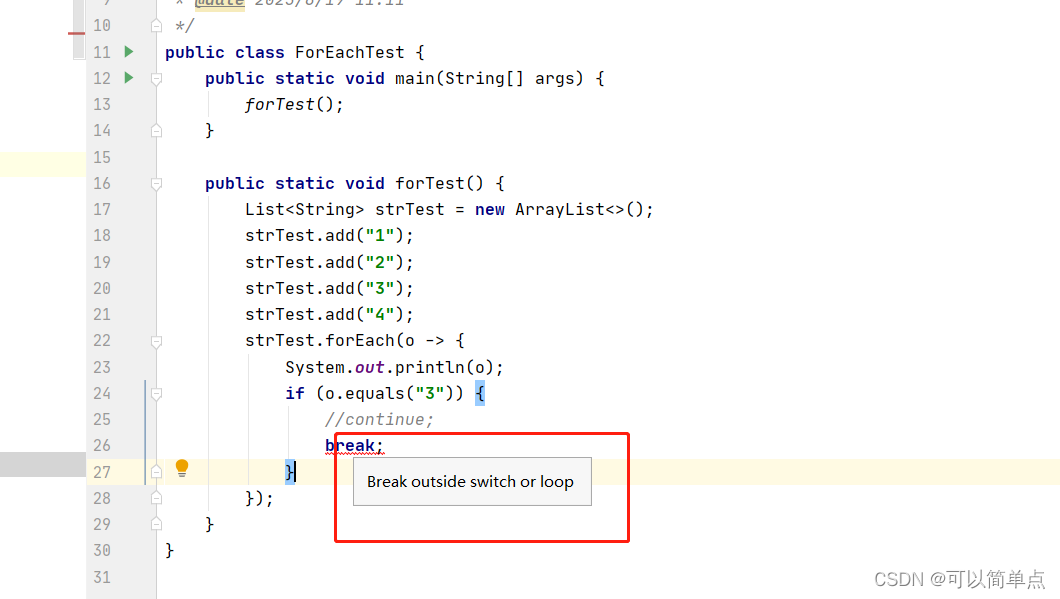
java forEach中不能使用break和continue的原因
1.首先了解break和continue的使用范围和作用 1.1使用范围 break适用范围:只能用于switch或者是循环语句中。当然可以用于增强for循环。 continue适用范围: 用于循环语句中。 1.2作用 break: 1. break用于switch语句的作用是结束一个switch语句。 2. break用于循…...

[杂项]水浒英雄谱系列电影列表
年份 片名 导演 主演 2006-01-01 母夜叉孙二娘 张建亚 周海媚 、 莫少聪 、 于承惠 [1] 2008-01-01 碧瑶霜迷案 黄祖权 陈龙 、 陈德容 、 翁家明 [7] 2008-05-09 青面兽杨志 张建亚 吕良伟 、 计春华 、 孟广美 [2] 2008-05-09 扈三娘与矮脚虎王英 张建亚 曾宝仪 、 郭德纲 、…...

6.RocketMQ之索引文件ConsumeQueue
本文着重分析为consumequeue/topic/queueId目录下的索引文件。 1.ConsumeQueueStore public class ConsumeQueueStore {protected final ConcurrentMap<String>, ConcurrentMap<Integer>, ConsumeQueueInterface>> consumeQueueTable;public boolean load(…...
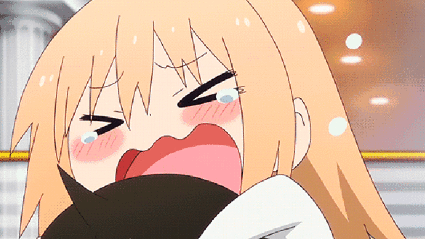
【C++学习手札】一文带你认识C++虚继承
食用指南:本文在有C基础的情况下食用更佳 🍀本文前置知识:C虚函数(很重要,内部剖析) ♈️今日夜电波:僕らのつづき—柊優花 1:06 ━━━━━━️💟──────── 3:51 …...

神经网络基础-神经网络补充概念-63-残差网络
概念 残差网络(Residual Network,ResNet)是一种深度卷积神经网络结构,旨在解决深层网络训练中的梯度消失和梯度爆炸问题,以及帮助训练非常深的网络。ResNet 在2015年被提出,其核心思想是引入了"残差块…...

【从0开始学架构笔记】01 基础架构
文章目录 一、架构的定义1. 系统与子系统2. 模块与组件3. 框架与架构4. 重新定义架构 二、架构设计的目的三、复杂度来源:高性能1. 单机复杂度2. 集群复杂度2.1 任务分配2.2 任务分解(微服务) 四、复杂度来源:高可用1. 计算高可用…...

vue3+ts+vite使用el-breadcrumb实现面包屑组件,实现面包屑过渡动画
简介 使用 element-plus 的 el-breadcrumb 组件,实现根据页面路由动态生成面包屑导航,并实现面包屑导航的切换过渡动画 一、先看效果加粗样式 1.1 静态效果 1.2 动态效果 二、全量代码 <script lang"ts" setup> import { ref, watch…...

【Java 动态数据统计图】动态数据统计思路案例(动态,排序,数组)四(116)
需求::前端根据后端的返回数据:画统计图; 1.动态获取地域数据以及数据中的平均值,按照平均值降序排序; 说明: X轴是动态的,有对应区域数据则展示; X轴 区域数据降序排序…...

Chrome命令行开关
Electron 支持的命令行开关 –client-certificatepath 设置客户端的证书文件 path . –ignore-connections-limitdomains 忽略用 , 分隔的 domains 列表的连接限制. –disable-http-cache 禁止请求 HTTP 时使用磁盘缓存. –remote-debugging-portport 在指定的 端口 通…...
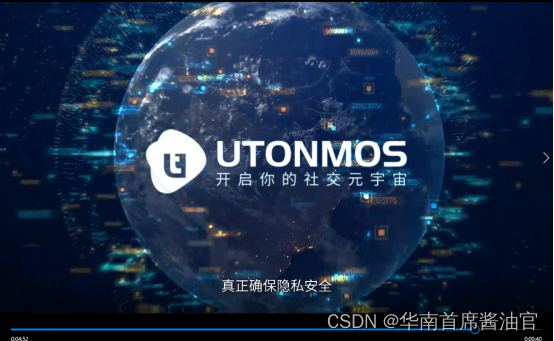
元宇宙赛道加速破圈 和数软件抓住“元宇宙游戏”发展新风口
当下海外游戏市场仍然具备较大的增长空间。据机构预测,至2025年全球移动游戏市场规模将达1606亿美元,对应2020-2025年复合增长率11%。与此同时,随着元宇宙概念持续升温,国内外多家互联网巨头纷纷入场。行业分析平台New…...

Vue的鼠标键盘事件
Vue的鼠标键盘事件 原生 鼠标事件(将v-on简写为) click // 点击 dblclick // 双击 mousedown // 按下 mousemove // 移动 mouseleave // 离开 mouseout // 移出 mouseenter // 进入 mouseover // 鼠标悬浮mousedown.left 键盘事件 keydown //键盘按下时触发 keypress …...

Bytebase 2.6.0 - 支持通过 LDAP 配置 SSO,支持 RisingWave 数据库
🚀 新功能 支持通过 LDAP 配置 SSO。支持增加多个只读连接。Schema 模版支持列类型约束。支持 RisingWave 数据库。库表同步功能支持 TiDB。数据脱敏功能支持 SQL Server。SQL 审核 CI 功能支持 Azure DevOps。 🎄 改进 支持设置数据库的环境与所属实…...
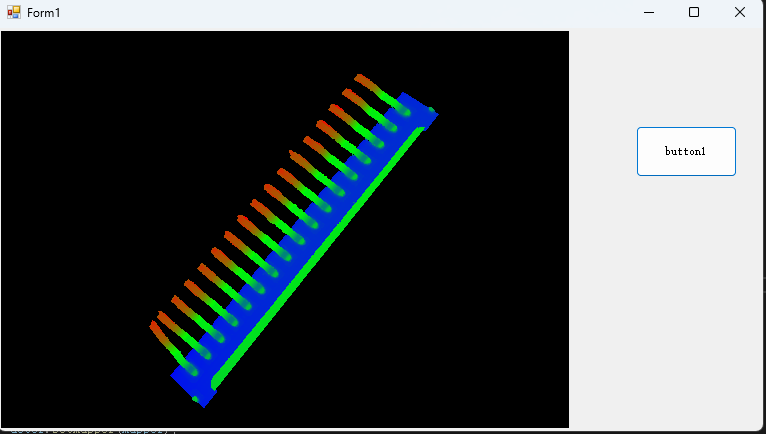
C# 读取pcd、ply点云文件数据
最近研究了下用pcl读取点云数据,又做了个C#的dll,方便读取,同样这个dll基于pcl 最新版本1.13.1版本开发。 上次做的需要先得到点云长度,再获取数据。这次这个定义了一个PointCloudXYZ类来存数据。将下面的dll拷贝到可执行目录下&a…...

LeetCode1387 将整数按权重排序
思路 首先是这种计算权重的方式很有可能出现重复,所以需要记忆化搜索记忆化搜索:先查表再计算,先存表再返回。将整数 x 和计算的权重分别存储数组的0和1的位置重写compare将数组排序按规则排序返回结果 代码 class Solution {private Hash…...

正则表达式--Intellij IDEA常用的替换
原文网址:正则表达式--Intellij IDEA常用的替换_IT利刃出鞘的博客-CSDN博客 简介 本文介绍IDEA使用正则表达式进行替换时的常用的一些示例。 根据注释加注解 需求 将 /*** abc*/ 改为: /*** abc*/ ApiModelOperation("abc") 方法 选…...

前端如何安全的渲染HTML字符串?
在现代的Web 应用中,动态生成和渲染 HTML 字符串是很常见的需求。然而,不正确地渲染HTML字符串可能会导致安全漏洞,例如跨站脚本攻击(XSS)。为了确保应用的安全性,我们需要采取一些措施来在安全的环境下渲染…...

C++学习第十四天----for循环
1.递增/递减运算符和指针 将*和同时用于指针的优先级? 答:前缀递增,前缀递减和解除引用运算符的优先级相同,以从右到左的方式进行结合;后缀递增和后缀递减的优先级相同,但比前缀运算符的优先级高࿰…...
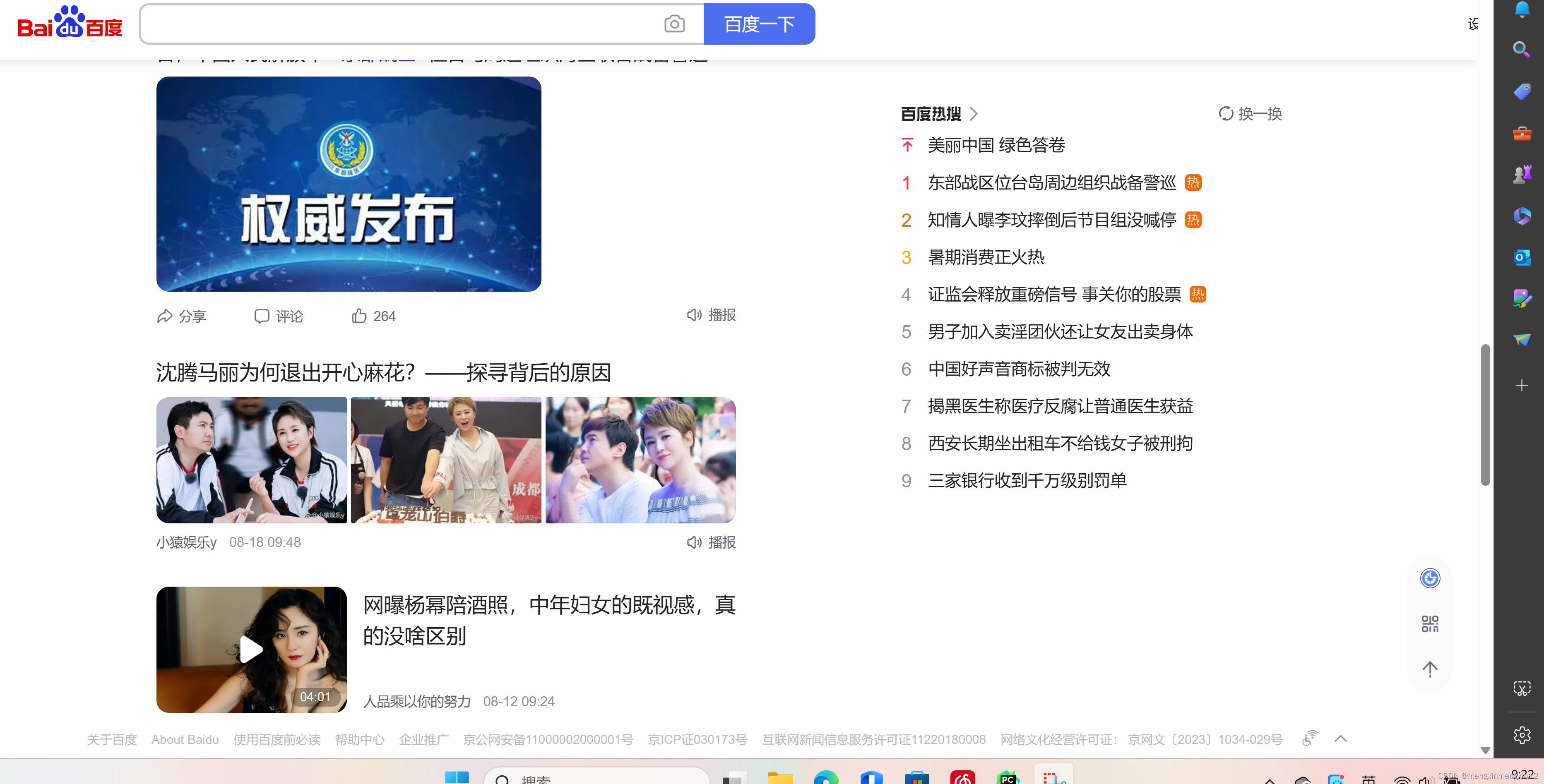
快速解决在进入浏览器时,明明连接了网络,但是显示你尚未连接,代理服务器可能有问题。
在进入浏览器时,明明连接了网络,但是显示你尚未连接,代理服务器可能有问题,如下图。 一般情况下,可能是因为你使用了某些VPN,然后VPN使用时修改了你的网络设置,我们可以通过以下方法快速解决。 …...

TypeScript入门指南
TypeScript学习总结内容目录: TypeScript概述 TypeScript特性。Javascript与TypeScript的区别 * TypeScript安装及其环境搭建TypeScript类型声明 * 单个类型声明,多个类型声明 * 任意类型声明 * 函数类型声明 * unknown类型…...

反向工程与模型迁移:打造未来商品详情API的可持续创新体系
在电商行业蓬勃发展的当下,商品详情API作为连接电商平台与开发者、商家及用户的关键纽带,其重要性日益凸显。传统商品详情API主要聚焦于商品基本信息(如名称、价格、库存等)的获取与展示,已难以满足市场对个性化、智能…...

iPhone密码忘记了办?iPhoneUnlocker,iPhone解锁工具Aiseesoft iPhone Unlocker 高级注册版分享
平时用 iPhone 的时候,难免会碰到解锁的麻烦事。比如密码忘了、人脸识别 / 指纹识别突然不灵,或者买了二手 iPhone 却被原来的 iCloud 账号锁住,这时候就需要靠谱的解锁工具来帮忙了。Aiseesoft iPhone Unlocker 就是专门解决这些问题的软件&…...

UE5 学习系列(三)创建和移动物体
这篇博客是该系列的第三篇,是在之前两篇博客的基础上展开,主要介绍如何在操作界面中创建和拖动物体,这篇博客跟随的视频链接如下: B 站视频:s03-创建和移动物体 如果你不打算开之前的博客并且对UE5 比较熟的话按照以…...
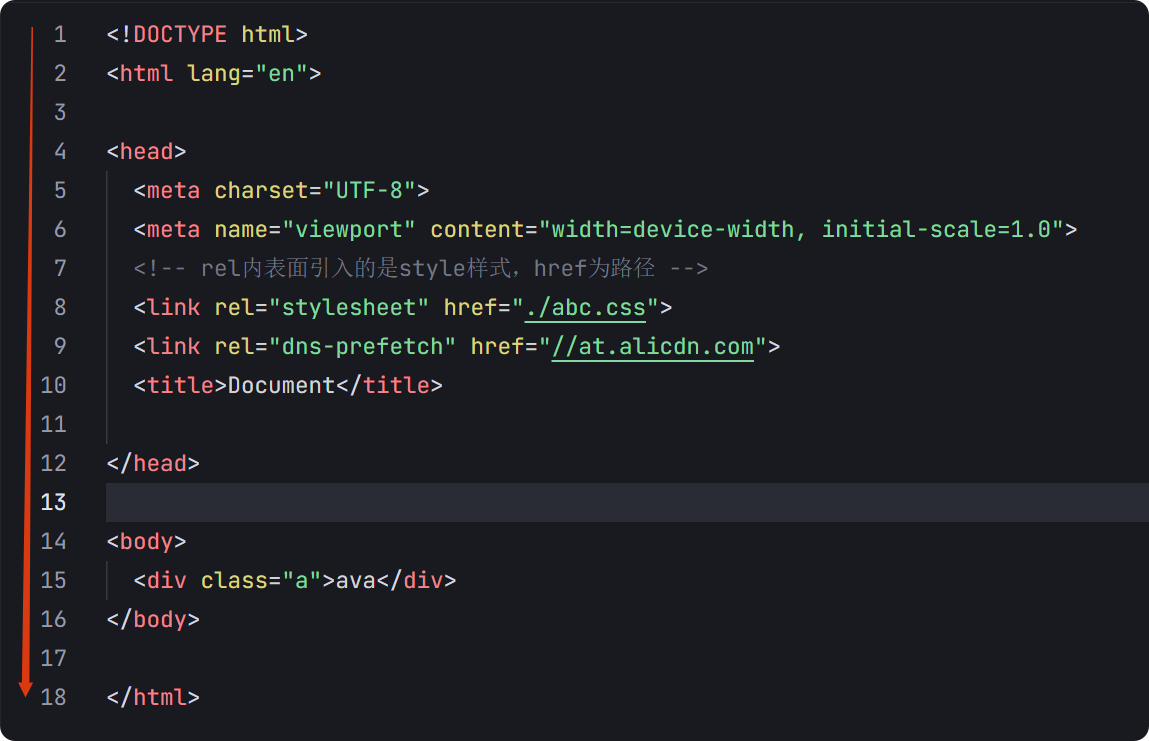
04-初识css
一、css样式引入 1.1.内部样式 <div style"width: 100px;"></div>1.2.外部样式 1.2.1.外部样式1 <style>.aa {width: 100px;} </style> <div class"aa"></div>1.2.2.外部样式2 <!-- rel内表面引入的是style样…...

CRMEB 框架中 PHP 上传扩展开发:涵盖本地上传及阿里云 OSS、腾讯云 COS、七牛云
目前已有本地上传、阿里云OSS上传、腾讯云COS上传、七牛云上传扩展 扩展入口文件 文件目录 crmeb\services\upload\Upload.php namespace crmeb\services\upload;use crmeb\basic\BaseManager; use think\facade\Config;/*** Class Upload* package crmeb\services\upload* …...

【JavaSE】绘图与事件入门学习笔记
-Java绘图坐标体系 坐标体系-介绍 坐标原点位于左上角,以像素为单位。 在Java坐标系中,第一个是x坐标,表示当前位置为水平方向,距离坐标原点x个像素;第二个是y坐标,表示当前位置为垂直方向,距离坐标原点y个像素。 坐标体系-像素 …...

IoT/HCIP实验-3/LiteOS操作系统内核实验(任务、内存、信号量、CMSIS..)
文章目录 概述HelloWorld 工程C/C配置编译器主配置Makefile脚本烧录器主配置运行结果程序调用栈 任务管理实验实验结果osal 系统适配层osal_task_create 其他实验实验源码内存管理实验互斥锁实验信号量实验 CMISIS接口实验还是得JlINKCMSIS 简介LiteOS->CMSIS任务间消息交互…...

网站指纹识别
网站指纹识别 网站的最基本组成:服务器(操作系统)、中间件(web容器)、脚本语言、数据厍 为什么要了解这些?举个例子:发现了一个文件读取漏洞,我们需要读/etc/passwd,如…...
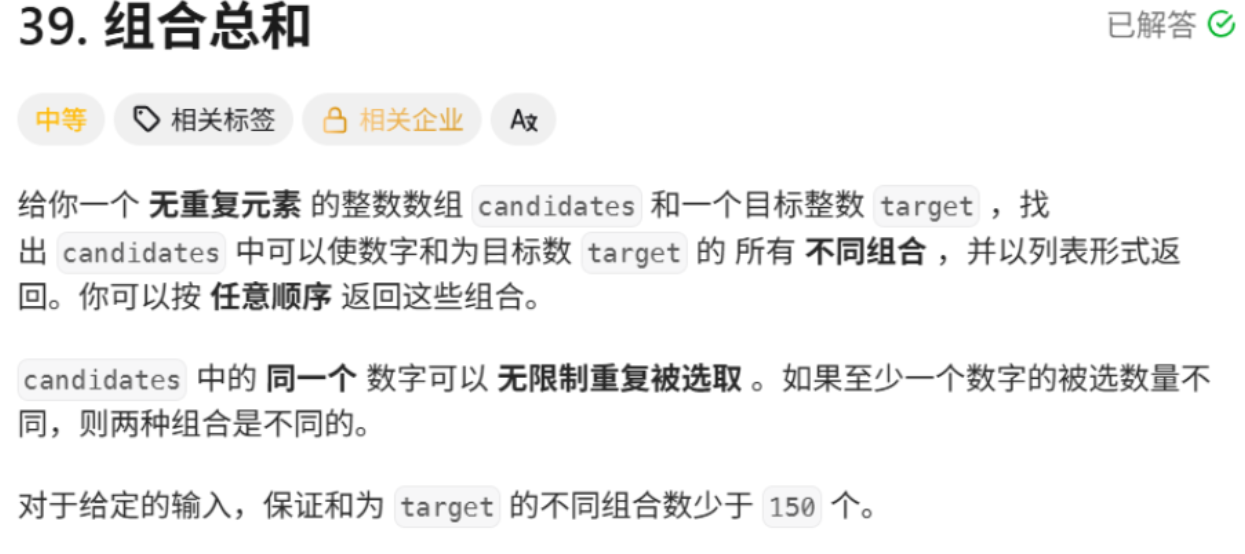
回溯算法学习
一、电话号码的字母组合 import java.util.ArrayList; import java.util.List;import javax.management.loading.PrivateClassLoader;public class letterCombinations {private static final String[] KEYPAD {"", //0"", //1"abc", //2"…...

CVE-2020-17519源码分析与漏洞复现(Flink 任意文件读取)
漏洞概览 漏洞名称:Apache Flink REST API 任意文件读取漏洞CVE编号:CVE-2020-17519CVSS评分:7.5影响版本:Apache Flink 1.11.0、1.11.1、1.11.2修复版本:≥ 1.11.3 或 ≥ 1.12.0漏洞类型:路径遍历&#x…...
